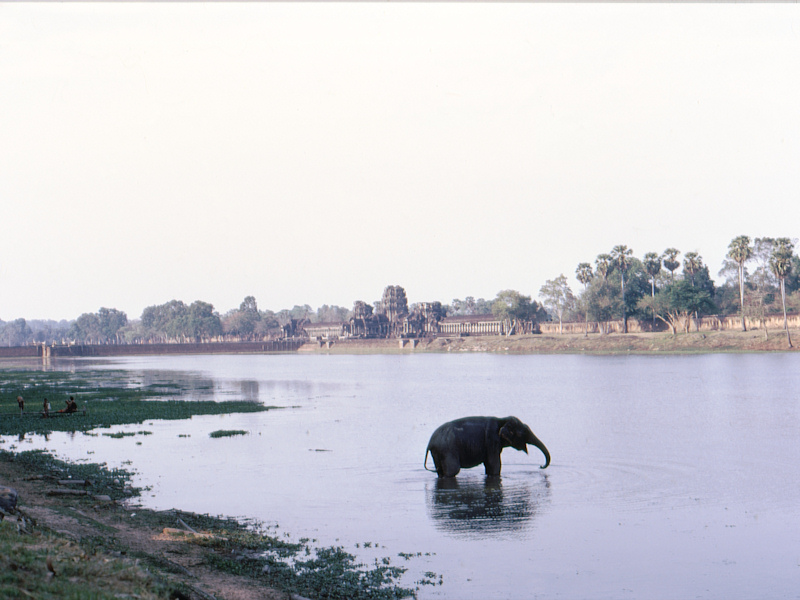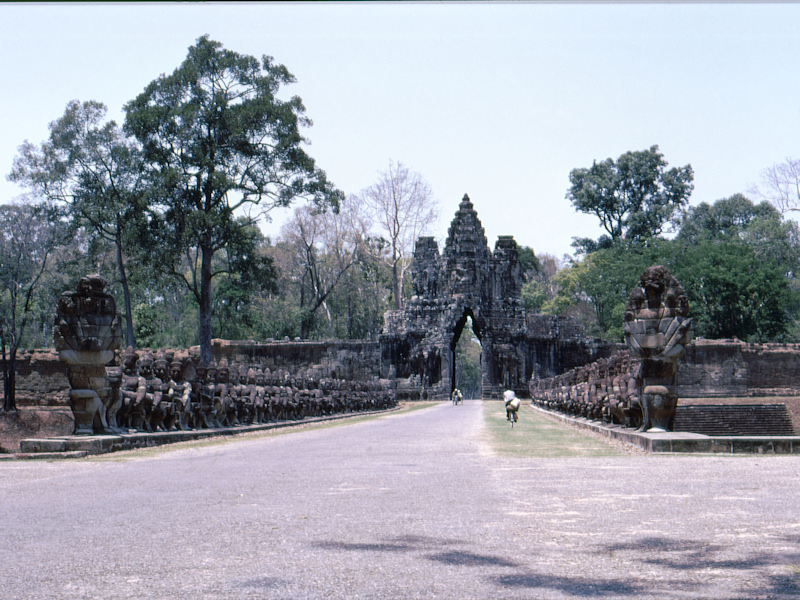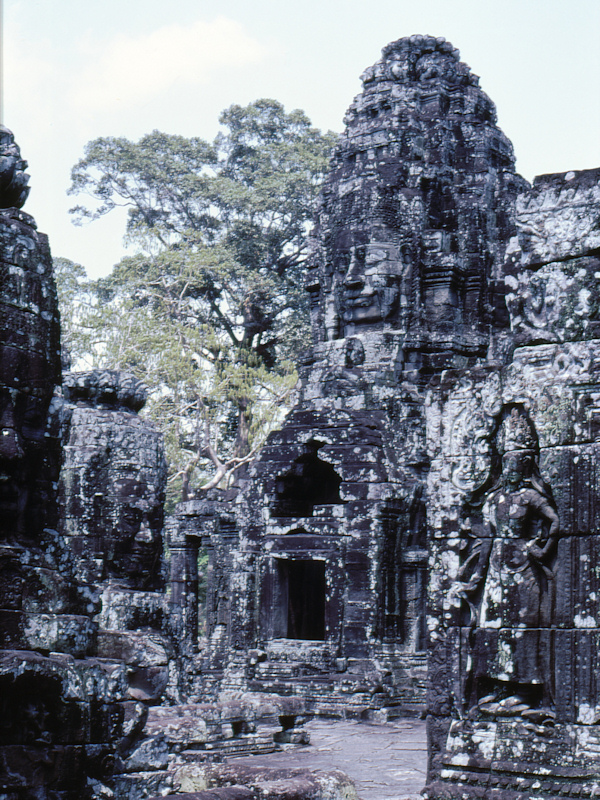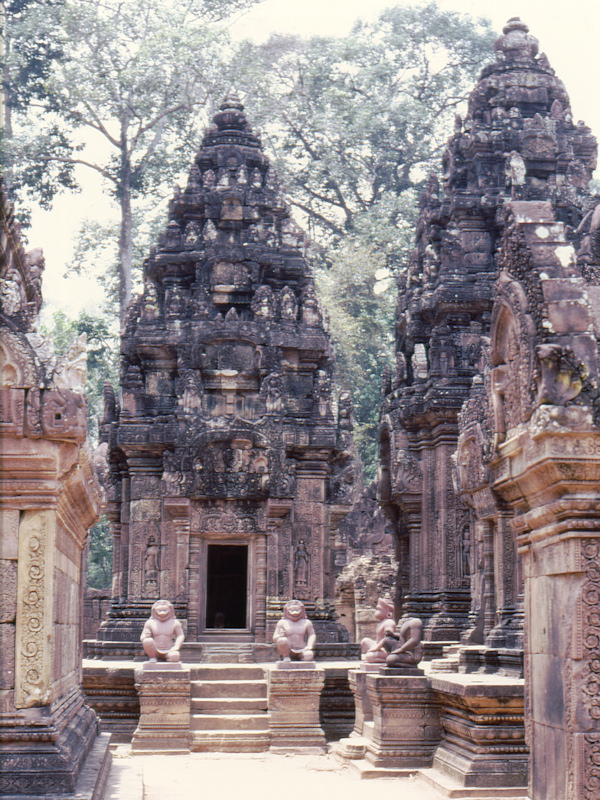
Photo album: "Angkor"
Fly over a photo with the mouse to enlarge it
Click on a photo to open it in a new window
We leave Phnom Penh, in bus, on April 6th to Siem Reap, town close to Angkor temples. We travel with Hans Peter, an Englishman we met in Chiang Mai. We already sighted him in Singapore and we met him again in Bangkok airport. In Siem Reap, André and me rent bicycles, Hans leaves us to go to the camping near Angkor Wat. In the evening, we come upon two of our comrades from the Antarctic: Jean Rousseau (Magne) and Jean-Claude Lancelot (Sismo). We last saw them in Hobart. If they had not missed their flight in the morning, we would not have seen them. We spend the evening with them. They will leave successfully the next day. We crisscross the neighbouring country with our bicycles. I resent acutely the theft of my colour films. I succeed in finding and buying only one Kodachrome II in a shop. I will use the three black and white films, I have saved, to photograph the particulars of the temples. We meet Hans from time to time. He will leave on April 9th. We depart from Siem Reap, still in bus, on April 15th to Phnom Penh.
 |
An elephant in the moat, in front of Angkor Wat. This temple is situated 6 km north of Siem Reap, it is the most famous temple of the Angkor complex, the best known all over the world. |
 |
The causeway to Angkor Wat. It
spans the moat that surrounds the temple and leads to the first walls.
Those ramparts that protect the temple outline a rectangle of 1000 m by
815 m. Between the walls and the moat, a wide platform runs all around the
temple. The external bank of the moat has the pattern of a rectangle of
1.5 km by 1.3 km. Click to see particulars of Angkor Wat. (black and white photos) |
 |
Once crossed the first walls, an internal paved way leads, across the
large courtyard, to the first arcade of Angkor Wat. This arcade surrounds
a higher first terrace. A second arcade surrounds a still higher second
terrace. Finally, a third arcade encloses a third terrace, made of a
narrow courtyard surrounding the lower part of the third level of the
square-shaped pyramid, very steep, topped by a high central tower and four
lower ones (one at each angle of the square). We can see only three towers
because two of them are hidden by the other ones. Click to see other particulars of Angkor Wat. (black and white photos) |
 |
Angkor Thom's southern entrance
gate. The causeway spans the moat in front of the tower. It has a row of
Devas (gods) on the left and Asuras (demons) on the right, each row
holding a Naga (serpent) in the attitude of a tug-of-war. This ancient
royal town has the shape of a square whose sides are about 3 km long. Click to see particulars of Angkor Thom's southern entrance gate (black and white photos) |
 |
Bayon temple is situated at the
geometrical centre of Angkor Thom. This mountain-temple is a three-level
pyramid. The inner walls of the lower double arcade are covered with
numerous carvings very well lighted because they have no longer a ceiling. Click to see particulars of Bayon temple (black and white photos) |
 |
One of the several face-towers topping Bayon temple. Cick to see other particulars of Bayon temple (black and white photos) |
 |
The Terrace of the Elephants, also
inside Angkor Thom as well as the Terrace of the Leper King and a few
other temples. Click to see particulars of Elephants Terrace and surroundings (black and white photos) |
 |
Trees that overrun Preah Khan
temple. Click to see particulars of Preah Khan temple (black and white photos) |
 |
Pré Rup is a three-level
mountain-temple. Its five towers are in bricks. It is situated 5 km east of Angkor Thom. |
 |
Bakong is a five-level
mountain-temple, it is covered with sandstone slabs. It is situated 24 km east of Siem Reap. |
 |
Banteay Srei, small Hindu temple made of pink sandstone, is situated in the jungle 20 km north-east of Angkor Thom. |
 |
Inside Banteay Srei temple. |
.
.
.
.
.
.
.